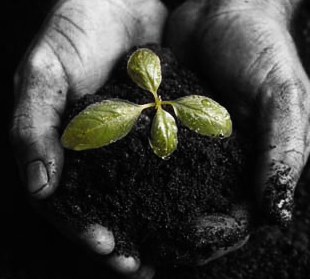
Landscaping With Native Plants for a ‘Greener’ Yard. An article by David Foster, Josh Baltzer, Neil Hughes, and Alex Millette.
With spring bringing unseasonably warm weather, many property owners are thinking about landscaping a little earlier this year. With a growing emphasis on environmentalism, it’s important to remember that our environmental stewardship can be practiced in all the decisions we make in our homes and places of work, including landscaping.
While landscaping comes with the obvious expenses of purchase, planting, and maintenance, there are hidden costs, not all of which are to our wallets. Nature has evolved a tremendous equilibrium between flora and fauna, and while our trend of urbanisation disturbs this greatly, using the right selection of plants in all our landscaping decisions can greatly reduce the damage done to the native ecosystem. Primarily, the use of plants that are native to our area provide native animals a niche to inhabit within the urban jungle. The use of non-native plants has a long history of disaster in Atlantic Canada, seeing the introduction of plants such as the Himalayan Balsam, Japanese Knotweed, Giant Hogweed, and the Oriental Bittersweet. All of these plants were introduced for their aesthetic value, but were able to spread out of control in the wild, and in some cases are threatening native plants which cannot compete with the invaders.
Some non-native species flourish in our environment, but other plants used for their aesthetic value require a significant investment of resources. Watering, necessary on occasion for most non-native plant species requires tremendous amounts of water, often easy to lose track of. An average exterior residential faucet should have a flow rate of around 15 litres per minute. If a sprinkler allows a flow of 10 litres per minute, a one hour watering session uses a tremendous 600 litres of water. Estimates of water usage show that around 30% of residential water consumption is used for landscaping purposes. Native species of plants may flourish with occasional watering, but they are evolved to survive in the region with little to no maintenance.
As a large landowner in Halifax (roughly 79 acres), Dalhousie is changing their landscaping methods to improve environmental stewardship. A soon to be ratified document outlines the future use of only native plants in landscaping where possible and names over 100 native species of plants which are suitable. It is hoped the policy will be put in place by the end of summer 2012, but Dalhousie’s Grounds Supervisor, Mike Wilkinson, says the policy is already practiced. Mr. Wilkinson says that Dalhousie’s goal is to “show a commitment to landscaping practices which are sustainable and environmentally responsible.” Dalhousie’s campus is not perfect, a 2005 inventory of trees on university property showed that only 22% of individual trees are of native varieties. But Dalhousie’s plan is a step in the right direction, and as Mike Wilkinson puts it, the university is “committed to working towards the ideal.” The university hopes their commitment will inspire the HRM community to step up as well.
There is good news for the Nova Scotia gardener; there are plenty of attractive native species of trees, shrubs, ferns, grasses and flowers. When planning your garden this year, consider plants such as: Beebalm, Canada Lily, Purple Cone Flower, Violet, Trillium, and Sunflowers; all are native to Nova Scotia and available at many local nurseries in season. For alternative to imported decorative trees, consider the Wild Black Cherry, Pin Cherry or a Crab Apple tree; all bear fruit that will attract all kinds of wildlife onto your property. The use of native plants is a plan for responsible environmental stewardship, and a look at the wide variety of plants native to Nova Scotia proves that you don’t need to look far to find a bit of natural beauty to spruce up your property this year.